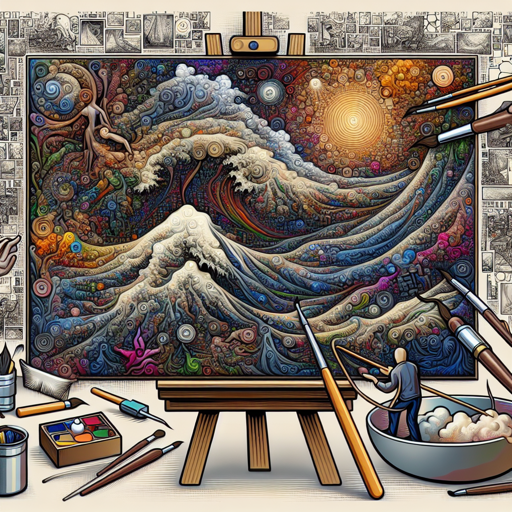Welcome to the world of advanced image processing with ControlNet Tile SDXL! In this guide, we will explore how to utilize this powerful tool for various tasks, including image deblurring, variations, and super-resolution. Grab your coding tools, and let’s dive in!
Understanding the Basics
At its core, ControlNet Tile SDXL is like a Swiss Army knife for image processing. Imagine you’re an artist working on a large canvas, and you need to add intricate details, adjust colors, or enhance sharpness. This tool helps you apply various techniques to your images, giving you the flexibility you need. Think of image deblurring as cleaning up smudged artwork, while image variation is like exploring different art styles and super-resolution is akin to enlarging your masterpiece without losing clarity.
Image Deblur Example
Here’s an example of using ControlNet Tile SDXL to deblur images:
prompt = "A detailed image description";
negative_prompt = "lowres, blurry";Simply provide a prompt with your desired details and a negative prompt to filter out unwanted qualities. The images will look pristine once deblurred!
Image Variation Example
Next, how about injecting creativity into your images? With ControlNet’s capability to create variations, you can generate multiple versions of the same scene:
prompt = "An imaginative scene with vibrant colors";
negative_prompt = "bad anatomy, cropped";This is akin to walking into an art gallery where each version of the painting projects a different interpretation – vibrant, mysterious, or tranquil.
Image Super-resolution
Super-resolution allows you to enhance your images to any aspect ratio you desire, increasing the level of detail significantly. Picture creating a panoramic image with incredible detail! Here’s how you can do it:
target_width = 3 * W
target_height = 3 * HThis command ensures you transform your original image into a stunning high-resolution output.
Putting It All Together: The Code
Here’s a comprehensive code snippet to get you started with image processing using ControlNet Tile SDXL:
from diffusers import ControlNetModel, StableDiffusionXLControlNetPipeline
import cv2
import numpy as np
controlnet_img = cv2.imread("your_image_path")
height, width, _ = controlnet_img.shape
controlnet_img = resize_image_control(controlnet_img, resolution=1024)
images = pipe(prompt, negative_prompt=negative_prompt, image=controlnet_img)With this, you can manipulate your images with confidence!
Troubleshooting Tips
- If your image results aren’t as expected, double-check your prompt’s specificity. The more details you provide, the better your outputs!
- Ensure that your Python script runs in the correct environment with all necessary libraries installed. If you face errors, consider reinstalling the necessary packages.
- If performance seems sluggish, try scaling down the image size before processing. Large files can bog down your system.
For more insights, updates, or to collaborate on AI development projects, stay connected with fxis.ai.
Conclusion
At fxis.ai, we believe that such advancements are crucial for the future of AI, as they enable more comprehensive and effective solutions. Our team is continually exploring new methodologies to push the envelope in artificial intelligence, ensuring that our clients benefit from the latest technological innovations.
With ControlNet Tile SDXL, you hold the brushes, and now it’s time to create your masterpiece!

